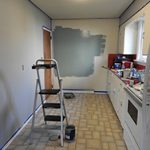 There are those that negotiate for the most reasonable deal possible and those that negotiate for the sake of negotiating. Sellers and buyers alike need to realize that the best deal possible is one where both get what they want in the deal.
There are those that negotiate for the most reasonable deal possible and those that negotiate for the sake of negotiating. Sellers and buyers alike need to realize that the best deal possible is one where both get what they want in the deal.
This isn’t necessarily an easy point to arrive at and is often a lesson in patience. In real estate, there’s something called the X-factor – a potential home buyer spends countless hours viewing properties until they finally find their perfect home. Instead of making an offer based on what the value of the home is to them and what comparable prices are, they immediately start to ponder how much less they should offer than whatever the asking price might be.
Sorry, but there isn’t some tacit X-factor percentage that should just automatically be subtracted from all listing prices. Home owners are more often than not just as eager to sell as the buyer is to buy. If so, the price of the home is usually realistically priced and priced closely to its comps.
Still, the quest for a deal spurs many to start with a low-ball offer that’s not only unrealistic, but often insulting to the seller. If the seller is offended, negotiations usually die before they’ve ever begun. So, any serious buyer shouldn’t have some magic automatic deduction from an asking price in their head. Look at the comps in the area and determine what the value of the home is for you based on how congruent it is to the needs and desires of your family.
How a purchasing price is arrived at for both owner and buyer is a very personal process. When accepting an offer, a buyer considers how fast they need to sell the home, how bad they need to sell the home, pressures from having already purchasing a replacement home, what is owed on the home, and so forth.
On the other hand, two potential buyers can look at the very same property and come up with two very different personal values for the home, depending on how congruent it is with each of their needs, the location of the home, appeal of the home, amenities, school system, and so forth. Aside from personal value, buyers and sellers must also look at the how much a lender will lend on the home based on it appraisal.
Price isn’t the only thing negotiated during the sale of a home. There’s also time lines, what will stay and go from the home, and who will pay for any problems found upon professional inspection. The most important thing for buyers and sellers to remember is that negotiating isn’t about one side getting everything they desire; it’s a give-and-take process of compromise.
To avoid a winner-take-all complex from forming, buyers and sellers should both have a list of top priorities prior to starting any negotiations. As new issues arise during the process, priorities might need to be re-evaluated to see if the priority is truly a must have for the home to change hands.
Many problems, such as fees and repairs, often can be solved by the buyer and seller meeting in the middle. Agreeing to split the costs evenly can be a much better option than wasting time and money to negotiate for weeks. For example, a seller that will pay another mortgage payment because of the additional time spent negotiating might actually find it cheaper to pay half the cost of a minor repair and close the deal before the next note is due.
Sometimes there are legitimate deal breakers. If so, then it just wasn’t the best option for the parties involved. But, before giving up, do try mulling over the troubling aspect of the negotiation for a few days. You can move on to the other areas of the negotiation. If everything else is agreed on, then there may be more encouragement to compromise on the problematic area.

 Your teen is ready to drive, and you have the privilege of preparing them for this responsibility. Use nine tips as you prep your teen to navigate the road safely.
Your teen is ready to drive, and you have the privilege of preparing them for this responsibility. Use nine tips as you prep your teen to navigate the road safely. Are you planning to welcome trick or treaters to your home this month? Follow 11 steps that prepare your property for safe Halloween fun.
Are you planning to welcome trick or treaters to your home this month? Follow 11 steps that prepare your property for safe Halloween fun. Don’t wait until the weather forecast calls for prolonged heavy rains before buying flood insurance. While this practical insurance can be purchased anytime, the policy does not take effect for 30 days. As the most common natural disaster in the country, flooding ruins millions of dollars of homes and property every year. Even so, flooding is not commonly covered in your typical homeowner’s insurance policy, making it necessary to purchase additional coverage for this costly, devastating disaster.
Don’t wait until the weather forecast calls for prolonged heavy rains before buying flood insurance. While this practical insurance can be purchased anytime, the policy does not take effect for 30 days. As the most common natural disaster in the country, flooding ruins millions of dollars of homes and property every year. Even so, flooding is not commonly covered in your typical homeowner’s insurance policy, making it necessary to purchase additional coverage for this costly, devastating disaster. Most Americans have seen ads on television for get-rich-quick seminars that teach novice investors the secrets of making money from housing foreclosure sales. In spite of all the hype, successfully buying and selling foreclosed real estate requires research, money, knowledge, experience and time. Furthermore, buying foreclosed real estate is not without risk. If you plan to try your hand at this type of investing, you need to be well-versed in foreclosure basics. Foreclosure is the legal recourse lenders or governmental agencies have to recoup money owed them because a property owner failed to make payments. The lender/agency can take the house and sell it to satisfy the debt.
Most Americans have seen ads on television for get-rich-quick seminars that teach novice investors the secrets of making money from housing foreclosure sales. In spite of all the hype, successfully buying and selling foreclosed real estate requires research, money, knowledge, experience and time. Furthermore, buying foreclosed real estate is not without risk. If you plan to try your hand at this type of investing, you need to be well-versed in foreclosure basics. Foreclosure is the legal recourse lenders or governmental agencies have to recoup money owed them because a property owner failed to make payments. The lender/agency can take the house and sell it to satisfy the debt. A burglary happens every 15 seconds in the United States with thefts averaging $1,725. Protect yourself, your family, your home and your peace of mind when you implement eight top home security tips.
A burglary happens every 15 seconds in the United States with thefts averaging $1,725. Protect yourself, your family, your home and your peace of mind when you implement eight top home security tips. Those wanting to give a home an update or remodel often also want to know what will give them the most return for their invested dollar should they ever want to resell. The results of one new report might cause some surprise.
Those wanting to give a home an update or remodel often also want to know what will give them the most return for their invested dollar should they ever want to resell. The results of one new report might cause some surprise. Personal umbrella insurance can be a valuable tool in your insurance portfolio since it protects your assets. Before you purchase this important protection, though, understand if you need it.
Personal umbrella insurance can be a valuable tool in your insurance portfolio since it protects your assets. Before you purchase this important protection, though, understand if you need it. Anyone that has ever moved can attest that the process has a considerable impact on everything from transportation to and from work to how and where free time is spent. When considering a move, one change that’s often overlooked is insurance coverage. Often a move will affect whether or not various insurance coverage policies are still adequate.
Anyone that has ever moved can attest that the process has a considerable impact on everything from transportation to and from work to how and where free time is spent. When considering a move, one change that’s often overlooked is insurance coverage. Often a move will affect whether or not various insurance coverage policies are still adequate.




